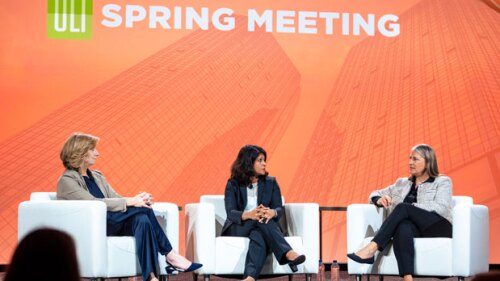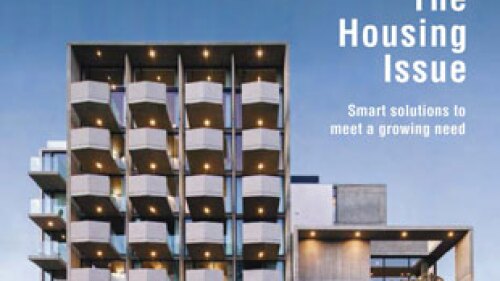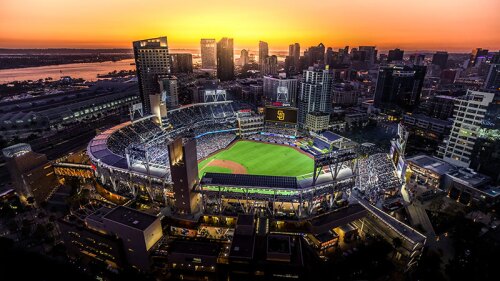On the final day of the ULI Spring Meeting in Charlotte, North Carolina, former Bank of America chairman and CEO Hugh McColl, Jr., discussed his favorite topic, the renaissance of downtown Charlotte, which he has helped plan and execute over the last four decades.
McColl explained that a coalition of public and private sector leaders along with philanthropists and citizens has been transforming Charlotte’s downtown since 1966, when the Odell Vision for Center City Charlotte focused on relocating the old convention center. Since then, a new downtown Charlotte master plan has been created each decade. The 1970s plan sparked development of housing in the downtown core and included rebuilding of the historic Fourth Ward, which had been heavily damaged during the 1968 riots. In 1978, a newly minted Business Improvement District aimed to strengthen downtown retail and create a more vibrant environment. “At that time,” McColl recalled, “you could shoot a shotgun down Tryon Street after 5:00 p.m. and not hit anyone.”
In the 1980’s, Charlotte’s downtown continued to fill out with new office towers, including the city’s first two modern skyscrapers, that added 3.5 million square feet of space. Public amenities including Spirit Square Center for the Arts and Education, the family-friendly science museum Discovery Place, and a new main library were built. The 1990s also saw the creation of another five million square feet of office space, a theater venue that could host Broadway shows, and new housing. An old department store was converted to condominium residences, and Bank of America built the city’s first million-square-foot office building for its new headquarters.
But city leaders did not stop there. In the late 1990s, McColl continued, development plans went into “overdrive.” Since that time, Charlotte has added another six million square feet of office space to its downtown, as well as nearly 5,000 new housing units, a large free parking garage that helps draw suburbanites into the city for evening entertainment, a dance theater, a children’s library, a downtown campus for Johnson & Wales University, and more – with an aggregate value of some $5.7 billion.
In the wake of the recession, however, the city is losing the deep-pocketed financial support it had received during more prosperous years. To implement the vision of its 2020 Plan, McColl predicted, Charlotte will need to broaden its partnerships. “We are entering a new reality,” he said. “Bank of America will bounce back and Wells Fargo will continue to be a contributor, but we no longer have the two ‘rich uncles,’ so we will need international investors to join our team.” McColl added that Charlotte also needs to connect its downtown seamlessly with its suburbs, bring in more attractions that fit its unique identity, and convince people to move downtown from the suburbs and exurbs.
“Our culture includes welcoming newcomers. It doesn’t matter where you came from. If you want to pitch in, we will find a place for you,” McColl concluded, reciting words from a hymn that have inspired him to chart Charlotte’s course for so many years: “From the past will come the future.”



